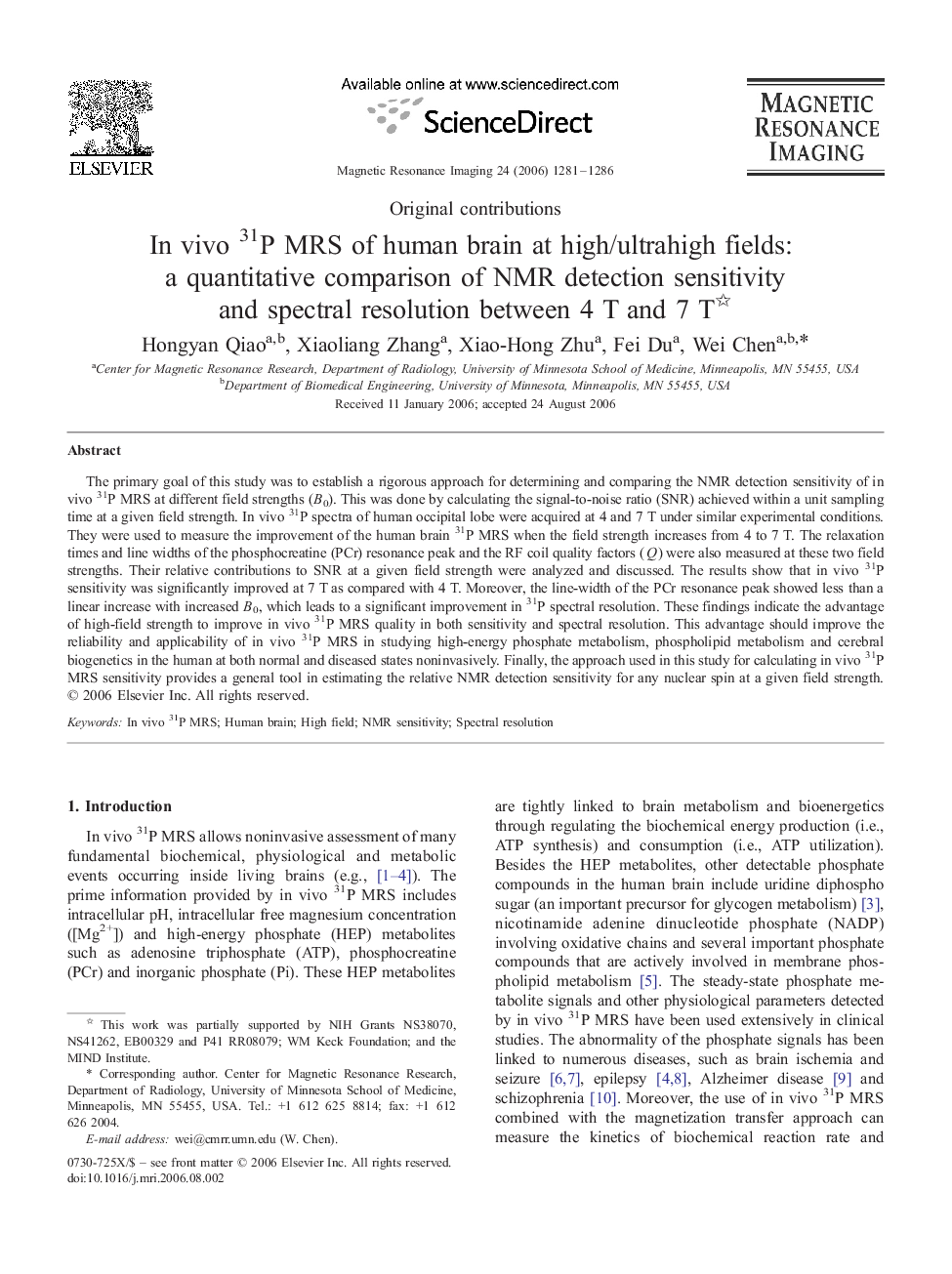| Article ID | Journal | Published Year | Pages | File Type |
|---|---|---|---|---|
| 1807964 | Magnetic Resonance Imaging | 2006 | 6 Pages |
The primary goal of this study was to establish a rigorous approach for determining and comparing the NMR detection sensitivity of in vivo 31P MRS at different field strengths (B0). This was done by calculating the signal-to-noise ratio (SNR) achieved within a unit sampling time at a given field strength. In vivo 31P spectra of human occipital lobe were acquired at 4 and 7 T under similar experimental conditions. They were used to measure the improvement of the human brain 31P MRS when the field strength increases from 4 to 7 T. The relaxation times and line widths of the phosphocreatine (PCr) resonance peak and the RF coil quality factors (Q) were also measured at these two field strengths. Their relative contributions to SNR at a given field strength were analyzed and discussed. The results show that in vivo 31P sensitivity was significantly improved at 7 T as compared with 4 T. Moreover, the line-width of the PCr resonance peak showed less than a linear increase with increased B0, which leads to a significant improvement in 31P spectral resolution. These findings indicate the advantage of high-field strength to improve in vivo 31P MRS quality in both sensitivity and spectral resolution. This advantage should improve the reliability and applicability of in vivo 31P MRS in studying high-energy phosphate metabolism, phospholipid metabolism and cerebral biogenetics in the human at both normal and diseased states noninvasively. Finally, the approach used in this study for calculating in vivo 31P MRS sensitivity provides a general tool in estimating the relative NMR detection sensitivity for any nuclear spin at a given field strength.
